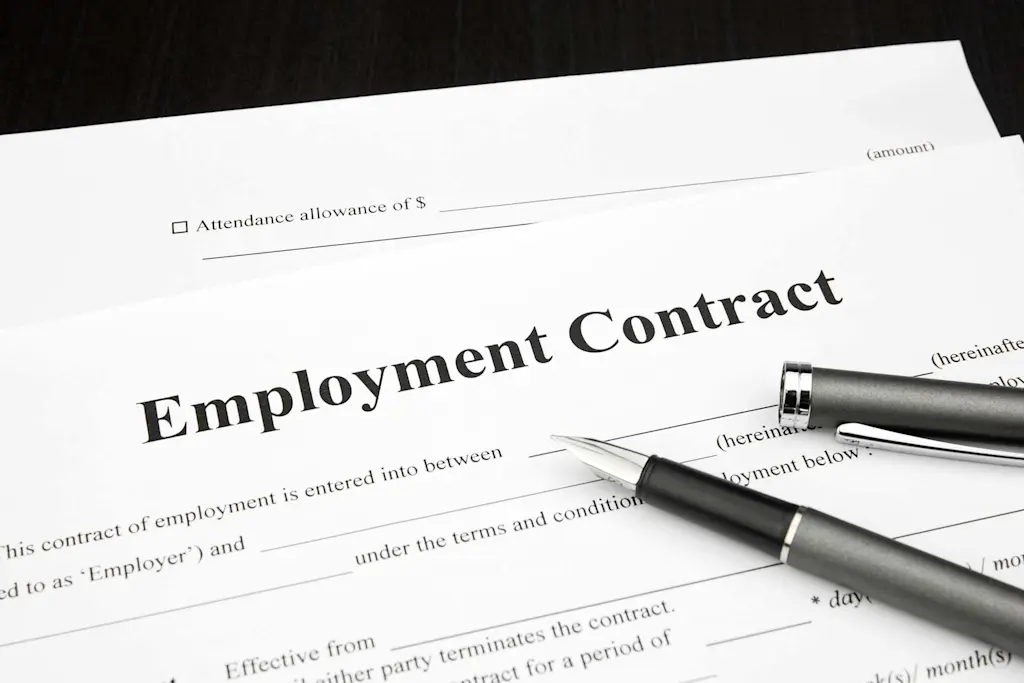Blog>Trade>Finance>Day rate vs hourly: which is best for your trade?
Last updated: 18 December 2024
Day rate vs hourly: which is best for your trade?
Should you as a tradesperson charge a day rate or an hourly rate? This article describes how day and hourly rates work, the pros and cons of each, and how to calculate the right hourly rate or day rate.

There’s no right or wrong answer to the question of whether you should charge a day rate or hourly rate. In fact, it’s easy to switch from a day to an hourly rate.
You need to decide what works best for you and your trade business.
Choose the rate that works best for you
As a starting point, the thing to consider with day rate vs hourly rate is to balance:
What works best for you
What works best for your customers
Be flexible if you can.
You could even offer customers options, such as converting a day rate to an hourly rate. Your customer may appreciate your openness about how you charge.
After all, if a job only takes two hours, it would be unfair to expect a customer to pay for a full day. Equally, you need to charge enough to make profit on the jobs you get.
Spend more of your time earning money
We'll spend our time supporting you with sales leads
How much should you charge?
This will depend on a number of factors. They include:
Your qualifications, skill level and experience
The type of work you do
What the average pay rates are for your trade
How long a particular job should take to complete
Do some homework on your trade and its typical pay rate. Find out from other trade businesses whether they use hourly or day rates.
Knowing which trades get paid the most can also help you see where your charging method best fits.
Which trades get paid the most?
If you’re a professional tradesperson – or planning to become one – there’s probably one question you want to know the answer to. Of course, we always want to know who earns more or less than us. It’s inevitable really. Human nature, you could say. There's an important reason, too. Knowing what

What should you charge for at an hourly or day rate?
An hourly or day rate is based on the charge for your labour. It’s the time that you spend working on a job.
The total time you charge for a job could include:
The actual time you spend doing the work
Any research or preparation you need to do beforehand
Travelling to and from jobs
A higher rate for working outside normal hours, such as weekends or bank holidays
Remember, there could be other costs you need to charge customers. These are in addition to your hourly or day rate that we discuss in this article.
You usually show these costs as extra items on your business invoice, along with your labour costs.
These could include:
Materials
Employees or subcontractors
Equipment
Delivery of materials or equipment to a site
Other costs you need to incur to complete jobs
Choose a labour pricing method that suits your trade business
One way to look at the overall cost of a job, including your time, is by using a job pricing template. It’s also handy to consider a pricing strategy that suits the way you work.
How to price a job
You need to consider lots of different elements when you price a job. It helps to have a consistent and accurate way of pricing jobs. A pricing template can do that for you. A job pricing template is a great way to start thinking about the whole picture. How to price up a job varies for every trade
How to handle labour costs of employees and contractors
Choosing a day rate vs hourly rate can get more complicated if your trade business has employees. The same goes if you use contractors.
You might first need to assess the benefits of hiring a contractor compared with taking on an employee.
Decide whether you prefer to charge their time to customers on an hourly or daily basis. If you have employees, then you need to make sure you pay them correctly – and tax due on their salaries. Once again, it helps if you know how to calculate an hourly rate from a day rate.
For employees, don’t forget about the government’s minimum wage. This applies to people paid hourly, daily, monthly and with an annual salary.

Spend more of your time earning money
We'll spend our time supporting you with sales leads
How to calculate an hourly rate from a day rate
As we’ve said, choosing a day rate vs hourly rate is your personal preference. A time-tracking app can help you with how to calculate an hourly rate from a day rate.
How an employee time tracking app boosts business
In our digital age, an employee time tracking app is a must-have for many trades. Medium to larger trade businesses tend to rely on software like this more and more. You can see why. Where you’ve got lots of employees working on many different projects, a time tracking app for employees is
Day rate calculation
A day rate is how much you charge customers for a full day’s work. What you call a full day is down to you. Typically, this could be eight hours.
You could charge this rate whether or not you actually work the specified number of hours.
Hourly rate calculation
On the other hand, with this method you charge your work by the hour. You only charge for the hours you work.
For example, say your day rate for an eight-hour day is £240. That means your hourly rate is £240 divided by eight – or £30 per hour.
What about breaks?
This can be a thorny issue for customers who want value for money. So, it’s best to take the question seriously and make sure customers understand your policy.
When you’re looking at a day rate vs hourly rate, remember to factor in breaks. Whether or not you include time spent on a lunch break is up to you.
A day rate would usually include a set period for a break – but not necessarily. An hourly rate can make calculations easier by treating your lunch hour as non-chargeable time.
As you can see, there’s flexibility here. It’s always best to stipulate clearly before you start a job exactly how you operate.

Hourly rate considerations
This is when you charge by the hour for your work. You could break this down into shorter periods if that helps you and your customers.
One way is to charge for every quarter hour. For example, a job takes two hours and 10 minutes. You could round up the 10 minutes to a quarter of an hour. So, you would charge for 2.25 hours.
These are some benefits and drawbacks of charging on an hourly basis:
Pros
It could be more flexible for you when you plan work
You charge for the exact amount of time you work
Customers are probably less likely to expect you to work overtime as they know they’ll be paying for it
It can be easy for you and your customers to see how long jobs take
Cons
It could be harder for you to price a job if you don’t know exactly how many hours it is likely to take
You might need to agree in advance with the customer exactly how many hours you will work per day
Customers might not like seeing the cost of a job going up if it takes longer to complete than you first thought
You may have to keep going back to the customer to say a job is taking longer and getting their approval to keep going
You could feel that customers expect you to work faster so you will charge them less. This could increase the risks of poor workmanship and accidents

Day rate considerations
Now let’s look at the other side of the day rate vs hourly rate debate. As we’ve said, a day rate is a set amount for working a full day. You might want to apply a day rate for specific jobs.
For example:
Longer jobs that take several days to complete
Complex jobs spread over a long period
These are some benefits and drawbacks of charging on an hourly basis:
Pros
Day rates tend to work out higher than hour rates – but not always
You’re paid for the agreed amount of time in your day rate, so probably won’t need to account for every minute you work
You could benefit if it takes less than a day to complete a job
Customers might prefer to know the exact budget for a job based on the number of days you say it will take
Customers know you’ll be with them all day and not disappear after a few hours
Cons
If a job takes longer than expected, you might have to finish the job but not charge any more. This could be frustrating and tiring and leave you out of pocket
You might need to go back to the customer to negotiate a higher charge for your work. This could be awkward for both of you
Spend more of your time earning money
We'll spend our time supporting you with sales leads
Other rates to consider beyond hourly and day rates
It’s not just a question of day rate vs hourly rate. There may be other rates that work better in your line of work.
Fixed-rate for the job
Another option that may suit your trade business is a fixed rate for the job.
Here, you agree on the cost regardless of how long it takes you. However, you will still need to calculate how long you expect the job to take – and what your rate for the time you work will be.
Monthly rate for the job
For bigger projects, trade businesses might bill customers at the end of the month. This would cover all the work undertaken during that period.
One way to do this is to see how many working days there are in a month. For example, 20 days. Then all you do is multiply the daily rate by 20.
Make the most of your time with more business leads
As well as deciding how best to bill your time, you need to fill those hours with profitable work. That’s where we can help you by finding leads for your trade business. It means you should be able to spend more of your time earning income.
Checkatrade members receive our help with new enquiries, leads and sales. There are lots of other benefits of Checkatrade membership too.
They include:
Exclusive offers and discounts with suppliers like Tradepoint and Wickes
Reduced cost of workwear and branding
Guaranteed work when booked through us (T&Cs apply)
Dedicated trades apps for job management and quoting/invoicing
What do you need to become Checkatrade approved?
Becoming a Checkatrade member comes with a whole host of benefits, but the biggest has to be gaining our seal of approval. Homeowners tend to expect a commitment to quality when it comes to the Checkatrade tick, which can help you to win more business. Here are the checks you'll need to pass to join our directory.

FAQs
What are the benefits of a day rate v hourly rate?
Both methods have benefits and drawbacks. It generally depends on what's best for you and your customers. Customers may prefer a flexible approach with a choice of charging methods.
How do you calculate an hourly rate from a day rate?
The usual way is to divide your day rate by the number of hours you decide to work in a normal day.
As well as a day rate vs hourly rate, what other options are there for charging customers?
You could agree to a fixed rate for a job. You’d charge this amount regardless of how long it took you. Another option is to agree on a monthly charge. This is usually based on the total days you have worked in that period.
What should you charge at an hourly or day rate?
It depends on you. As well as the time you spend working on a job you could include other time. For example, research and preparation time before you start or travel time to get to a job.
Is overtime part of an hourly or daily rate?
Again, it depends on how you prefer to work. On an hourly rate, you could probably add more hours to the amount you charge. For a daily rate, you need to be clear with customers whether you charge overtime as extra.
Ready to take your business to the next level?
We can help you get there





